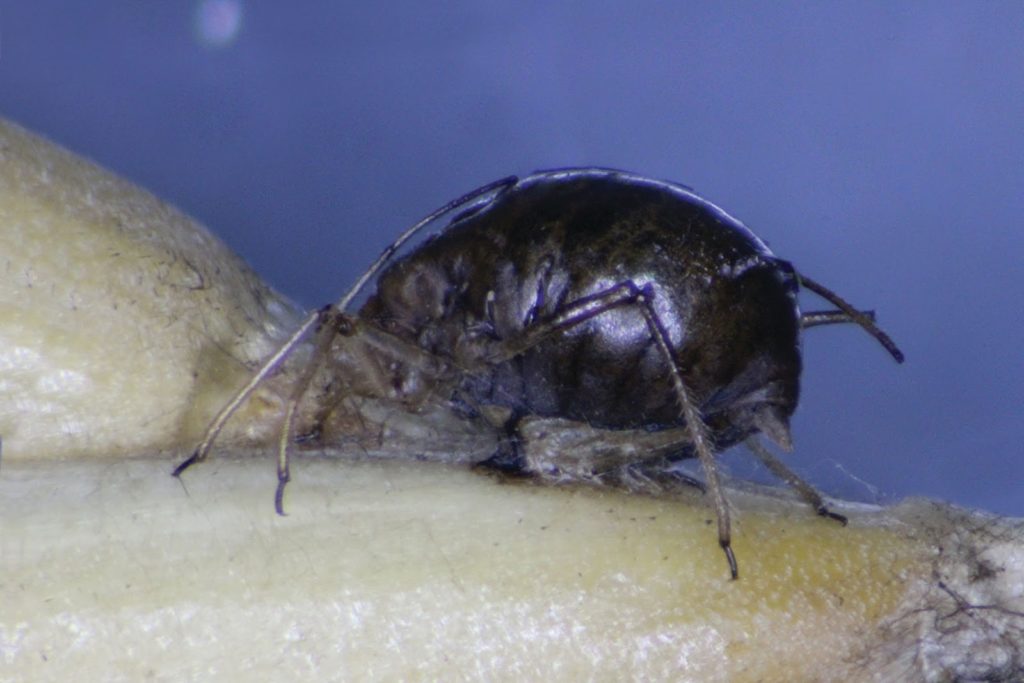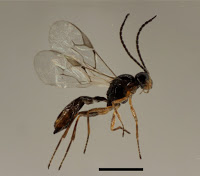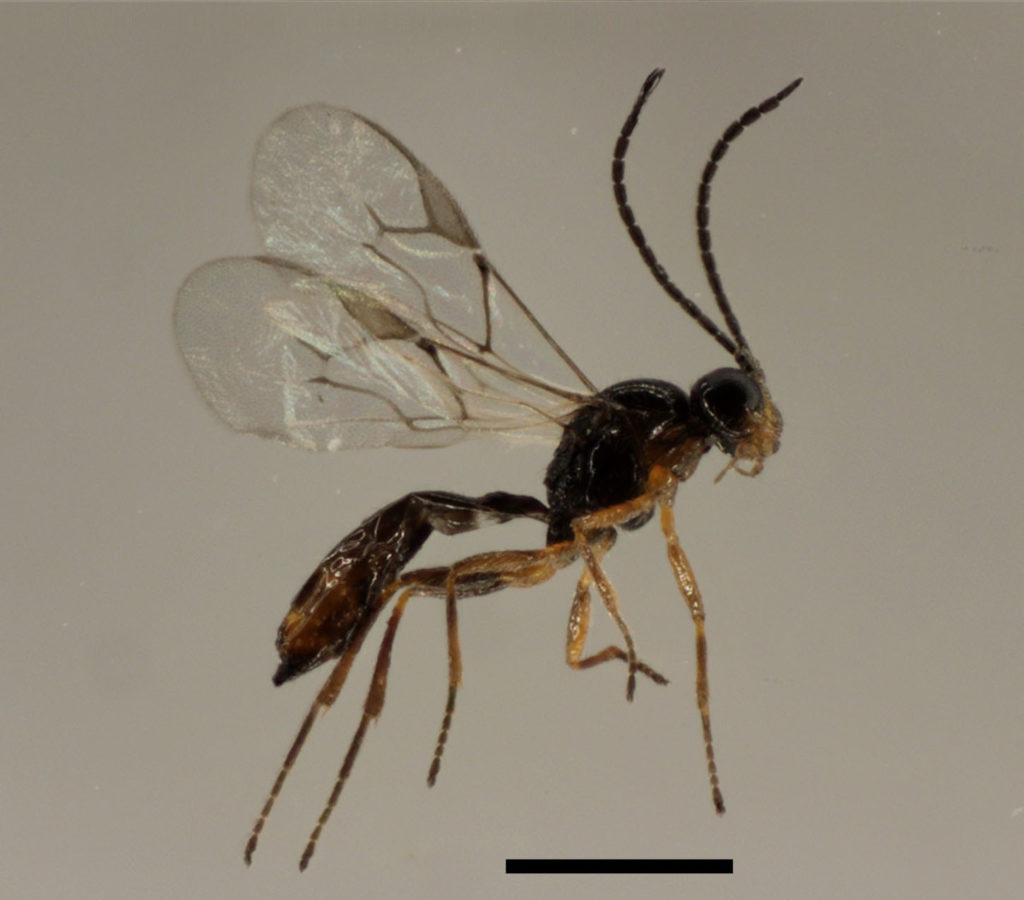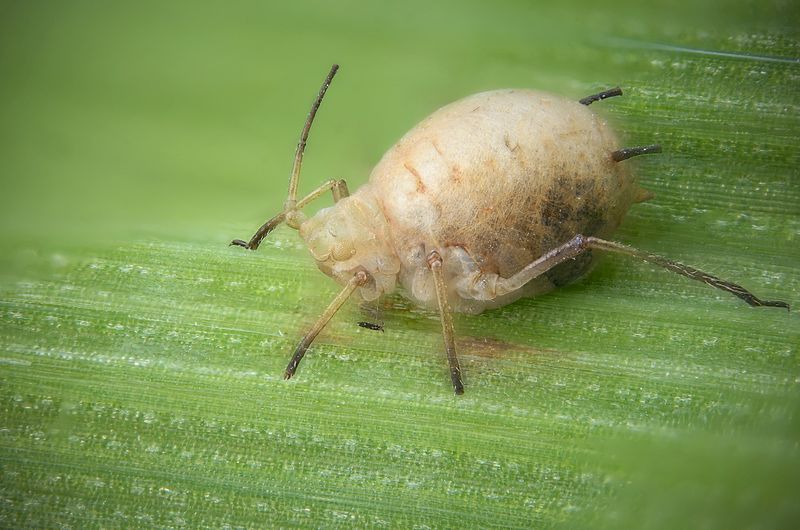Aphidius spp. parasitoid wasps (Hymenoptera: Aphidiidae) are important natural enemies of aphids. Their hosts include over 40 aphid species! Female parasitoids lay individual eggs inside aphid nymphs. After hatching, the parasitoid larva consumes its host, eventually killing it. The parasitoid pupates inside the dead or mummified aphid before a new adult parasitoid emerges. New generation adult parasitoids chew a hole in the mummified aphid to exit and immediately search for new aphid hosts.
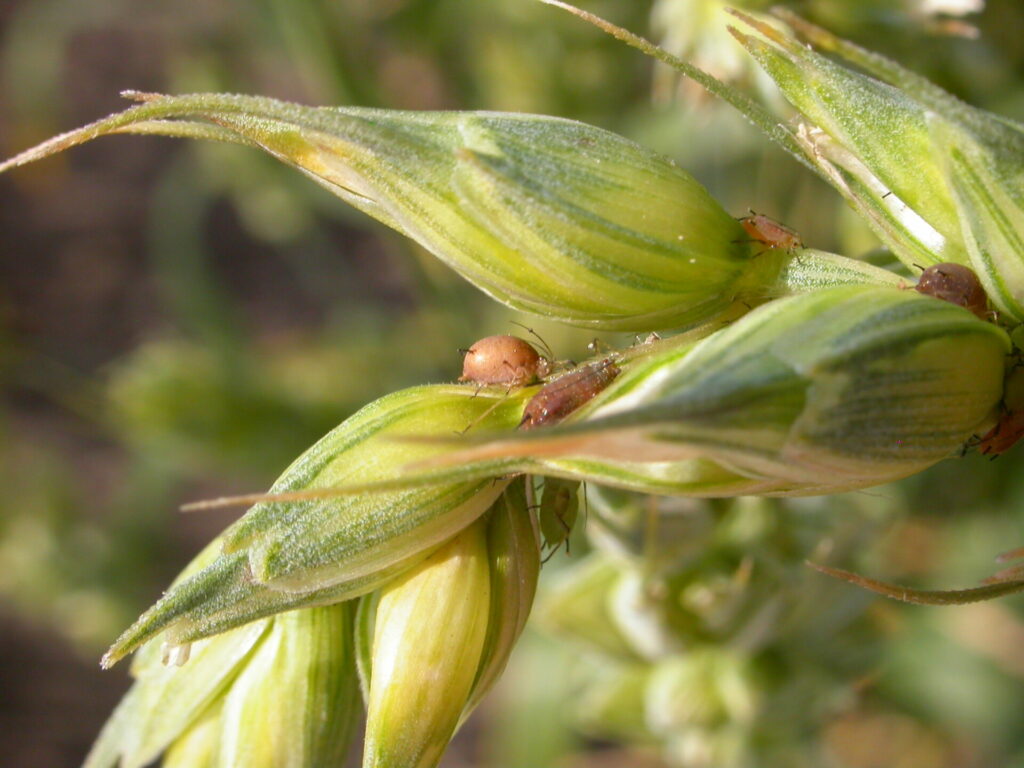
Aphid mummies look bloated and discoloured compared to healthy adult aphids. Parasitism rates can be estimated by counting the number of aphid mummies on five host plants at five locations within a field.
For more information about the predators and parasitoids of aphids, visit the Field Crop and Forage Pests and their Natural Enemies in Western Canada: Identification and Management field guide. (en français : Guide d’identification des ravageurs des grandes cultures et des cultures fourragères et de leurs ennemis naturels et mesures de lutte applicables à l’Ouest canadien).
To learn more about some of the natural enemies fighting insect pests in background visit www.fieldheroes.ca or follow @FieldHeroes on Twitter.

